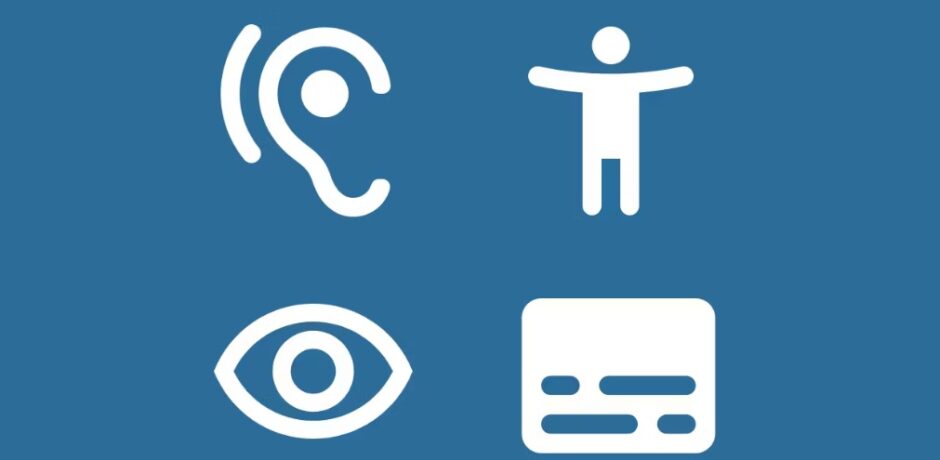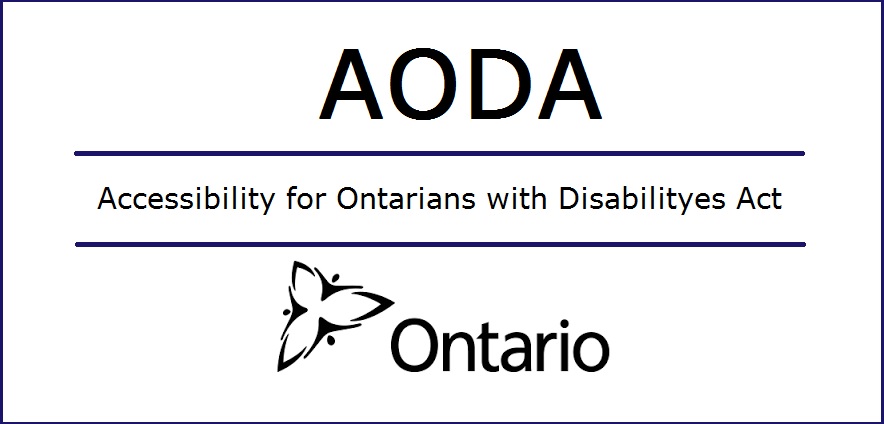AODA
WCAG Compliance for WordPress E-commerce Stores: A Best Practices Guide for Publishers
Building a successful WordPress e-commerce store goes far beyond good design, SEO, and robust functionality, especially for publishers and media-driven organizations and WCAG is a key feature. One of the most impactful, yet often under-appreciated, pillars of a modern online presence is accessibility. In North America and globally, ensuring your e-commerce experience is compliant with the Web Content Accessibility Guidelines (WCAG) isn’t just a legal checkbox; it’s a core element of digital citizenship, expanding your audience and strengthening your brand integrity.
Why WCAG Compliance Matters for E-commerce Publishers
For organizations such as digital publishers and content-driven companies, traffic diversity is a given. Not only does your website need to serve customers with a range of abilities, it must also navigate the strict requirements of global accessibility legislation such as the AODA (Accessibility for Ontarians with Disabilities Act) and the ADA (Americans with Disabilities Act). In Canada, where we’ve helped organizations like Blue Ant Media and House of Anansi transition to accessible digital storefronts, compliance isn’t optional.
- Legal protection: Reduce risk of lawsuits or complaints stemming from inaccessible interfaces.
- Increased reach: Roughly 1 in 5 Canadians has a disability. WCAG compliance opens your store to millions more.
- SEO advantage: Accessible sites often perform better in search rankings, as many SEO best practices overlap with accessibility.
- Brand reputation: Publishers and media companies thrive on trust, demonstrating accessibility is a mark of responsibility and care.
Understanding WCAG: The Foundation for Accessible WordPress Stores
WCAG is a set of global standards created to ensure that digital experiences are Perceivable, Operable, Understandable, and Robust. For e-commerce publishers, this means:
- Text is readable and adaptable (font resizing, contrast ratios)
- Media (audio, video, images) includes text alternatives
- Full keyboard accessibility for all functions, from search, to navigation, to checkout
- Error recovery is clear and helpful (think accessible form validation)
- Logical structure for assistive devices (screen readers, voice navigators)
The Vertical Approach: Accessibility Meets E-commerce Performance
At Vertical, we don’t see accessibility as a bolt-on. In our WordPress e-commerce builds, WCAG compliance is woven through our design, development, and content processes from day one. Our years of experience migrating and optimizing large publishing platforms (including major accessible Shopify builds, and complex custom WooCommerce installations) have proven that accessibility can enhance, not hinder, engagement, conversions, and long-term site health.
Best Practices: Making Your WordPress Store WCAG-Compliant
1. Choose Accessible WordPress Themes and Plugins
Start with a theme constructed with accessibility in mind. We prefer well-maintained themes that state explicit WCAG support and regularly audit all plugins for accessibility best practices. Avoid bloated or visually-complex builders that generate non-semantic HTML or interfere with keyboard navigation.
- Look for ARIA landmarks and proper heading structure.
- Test plugin modals, popups, carousels, and search fields for keyboard and screen reader use.
2. Semantic HTML & Clear Structure
Every page on your e-commerce site, from landing to checkout, should use logical, semantic HTML. This means ensuring headings (<h1>-<h4>), lists (<ul>, <ol>), buttons, and form fields are coded appropriately. Custom widgets should avoid <div>-only structures and always provide ARIA attributes where necessary.
3. Color Contrast, Typography, and Visual Cues
For content-rich stores, particularly publishers, contrast ratios are critical. We follow WCAG AA or AAA guidelines, ensuring all text stands out from its background and visual cues (links, buttons, state changes) are also conveyed non-visually (e.g., underlines, focus outlines).
- Tool: WebAIM Contrast Checker
4. Alt Text and Accessible Media
Every product image, banner, video, or audio file must have alternative text that describes the content and function. Publishers often use rich media, making this doubly important across not just product images, but also blog illustrations and downloadable previews.
- Don’t just restate product titles, describe unique visuals.
- Transcripts for videos or audio samples.
5. Keyboard Navigation & Interactive Elements
All site functionality should be accessible by keyboard alone. This is crucial in e-commerce, where customers need to:
- Enter search queries
- Navigate product categories and filters
- Add to cart, view cart, and proceed to checkout
- Enter payment and shipping data seamlessly
Custom forms, mega menus, and pop-up modals must retain focus and be dismissible without a mouse.
6. Accessible Forms, Validation, and Error Feedback
Checkout and account creation are common pain points. Make sure every form field:
- Has a clear visible label (not placeholder-only)
- Communicates errors and confirmations in text, not just color
- Respects tab order and offers clear, descriptive ARIA messages for screen readers
7. Mobile Accessibility
With e-commerce increasingly mobile, responsive layout isn’t enough. Interactive elements must be easily tappable, and screen readers should interpret the mobile experience as clearly as the desktop one. Vertical builds are extensively tested across iOS/Android assistive technologies.
8. Ongoing Accessibility Audits and User Feedback
Accessibility isn’t a one-off project. After launch, make site audits a routine: use tools such as AXE, Wave, or Lighthouse. Whenever you push new content, themes, or plugins, re-test for compliance. Encourage feedback from your user base and strive to continuously improve.
Common Accessibility Mistakes on E-commerce Sites (and How to Avoid Them)
- Images that contain critical information but lack meaningful alt text
- Flashy carousels or sliders without keyboard support
- Invisible focus indicators on form fields or buttons
- Linking structure not clear, screen reader users can’t distinguish between navigation, promotional, and action links
- Popup chatbots or banners that can’t be dismissed with keyboard
- Unlabeled icons (e.g., cart or wishlist without a text alternative)
- Error messages that are color-only or appear outside the logical flow for screen readers
WCAG for Publishers: A Focus on Dynamic Content and Accessibility
For companies with complex content requirements, like news outlets, indie bookshops, or education platforms, accessibility challenges often arise from custom content types, taxonomy-driven product catalogs, and frequent content updates. Our experience merging diverse taxonomies and resource types during large platform migrations highlights the importance of:
- Assigning clear language tags for multilingual stores
- Accessible search experiences (autocomplete, filters, live results)
- Accessible downloadable resources (PDFs, samples, etc.)
We always recommend pairing structured data for SEO and accessibility, making it easier for both search engines and assistive tech to parse your rich content.
Building Accessibility Into Your Workflow
If you’re running (or building) a WordPress e-commerce store as a publisher, here’s a practical checklist to ensure WCAG compliance becomes a core pillar, not just a late-stage afterthought:
- Include accessibility in your design briefs and acceptance criteria.
- Train content editors on writing accessible alt text and using headings properly.
- Integrate accessibility testing in your QA process with both tools and real users with disabilities.
- Partner only with developers who share the same accessibility-first philosophy.
Additional Resources for Your Team
Our Commitment & How We Can Help
WCAG compliance isn’t just a technical or legal requirement. It’s a moral and business imperative for publishers looking to lead in a crowded digital landscape. At Vertical, our mission is to make the web a place where every audience can connect with your content, products, and brand story, regardless of ability.
If you’re a publisher ready to prioritize accessibility in your WordPress e-commerce strategy, or if you’re unsure where to begin, our expert team is here to help you every step of the way.
Learn more or get in touch at verticalhq.ca for a consultation tailored to your site’s goals and compliance needs.
Implementing AODA Compliance for Web & Mobile Applications
Part of the Ontarian set of laws intended to improve accessibility for people with disabilities, the AODA – Accessibility for Ontarians with Disabilities Act adopted back in 2005 is intended to implement and enforce accessibility standards for Ontarians with disabilities with respect to everyday life aspects like goods, services, employment, accommodation, healthcare, facilities, transport and more kh0csxv.
The act eliminates what is called a barrier in terms of technology, information, communication and more for people with mental or physical disabilities. The Act is a major step forward in the history of fighting against discrimination of persons with disabilities in Ontario, therefore supported by individuals, as well as by government entities and companies alike.
The AODA sets of rules and standards concern the internet perhaps more than anything else. Ontario based websites need to comply with these regulations or are susceptible to penalties that can even escalate to lawsuits. The Act clearly specifies that government entities, public sector organizations, enterprises and related businesses must align their websites and web applications with the World Wide Web Consortium Web Content Accessibility Guidelines (WCAG) 2.0, intended to make website browsing and content access easily available to people with different levels of disabilities, from cognitive limitations to physical impairment.
AODA complaint websites will become the standard in the upcoming years, as the Act’s rules and regulations must be fully adopted and implemented by 2025, as stipulated by the law. However, implementing the necessary accessibility features requires both analysis and development to ensure correct design and functionality and a win-win outcome for visitors and users as well as for website and web apps operators and owners.
The most common implementation of the AODA compliance for web projects is based on the technical standard WCAG 2.0 levels:
- Level A (lowest), which implies a logical app/site structure, audio control, keyboard access, text alternative for non-text content, responsible use of colors, video and audio captions and more
- Level AA (intermediate), which implies live captions, audio alternative to text, text resizing options, sensitive data secured management, pre-set contrast ratio, use of clear and accessible icons, links and buttons, and more
- Level AAA (advanced), which implies translations, media alternatives, intuitive visual layout, keyboard accessibility, location and geo-location services, optimal readability level, help and instruction regarding site browsing and functionality and more
At VerticalWave Solutions we support the AODA and work close with our clients to implement intuitive and correct accessibility features across all the websites, apps and platforms we develop. This is a complex process, starting with website/app/project audit and continuing with responsible research and development to reach the end goal. Our Drupal projects integrate modern UI and UX with intuitive accessibility features. A close focus on design and functionality on both mobile and desktop platforms ensures a successful project delivery and seamless integration with the AODA rules and regulations.
Text resizing, text to speech, full featured content, accurate search, responsive and adaptive design, mobile friendly interface, quick access buttons, media integration, intuitive menus are just a few of the required accessibility features we successfully implemented for important clients like The C.D. Howe Institute, GREO – Gambling Research Exchange Ontario, YouthREX, <a href="https://verticalhq find more info.ca/portfolio_item/the-homeless-hub”>The Homeless Hub and more. All of our clients’ websites and apps are fully comply with the Accessibility for Ontarians with Disabilities Act as required for an optimal web experience.









